Food insecurity occurs when food systems are stressed so that food is not accessible, available, and/or is of insufficient quality1. This a chronic problem affecting Inuit communities2-4. In 2001, 56% of households in Nunavut were considered to be food insecure, and this was not limited to those households of lower income5. Within higher income households, 40% reported not having enough food at least once in the past year5. Recent work has documented a high prevalence of food insecurity (>60%) in some small Nunavut communities6 and the Nunavut Inuit Child Health Survey reported that 70% of Inuit pre-school children lived in food insecure households7. Various factors that influence food security among Inuit have been identified as including unemployment, the transfer of traditional knowledge to younger generations, changing food preferences, acculturation, cost of living, and environmental stress4,8-17.
Food in an Inuit context not only represents a means to proper nutrition and health18, but is also tied to overall wellness and has strong cultural meaning19-22. The food system in Inuit regions is a dual system, combining traditional foods (commonly referred to as 'country foods') mostly from harvesting, hunting and fishing, with the store-bought foods of fresh produce and processed foods typically imported from southern Canada. The most important aspect of the food system in Inuit communities is the consumption of country foods as part of a succession of culturally meaningful processes and experiences which include the harvesting, processing, sharing and preparation of these foods13,23. An important feature of the food system in Inuit communities is the continuation of food-sharing networks that focus on the sharing of country foods. Sharing practices differ across Nunavut, but they generally follow a complex set of kinship-mediated interactions within the extended household, including friends and neighbours and often spanning communities with ready access of air transport and programs that subsidize the sharing of country foods across communities24-27. The Inuit Child health Survey reported that 81% of preschool children live in homes that share country foods2. Such systems also distribute traditional foods to those who have limited access, such as elders or families without a hunter20,28, and are considered a positive health determinant for Inuit by increasing social support29. There is concern that traditional food-sharing practices are increasingly under stress due to adverse socio-economic factors and climate change6,15,21,22,30,31.
The majority of research on food security among Inuit has been conducted in small, remote, more traditional communities with strong ties to the subsistence-based sector30 and has typically focused on developing baseline information about food security. Few studies have been conducted in larger northern settlements (eg Iqaluit, Inuvik) which are growing rapidly as a result of in-migration from smaller communities and southern Canada, providing administrative functions and transportation access to southern centres, and have strong wage-based economies. The authors called these communities regional Inuit centres (RICs). The food systems of RICs differ from the smaller communities both in the role played by traditional and store-bought foods in the diet, and the socioeconomic processes determining food access, availability and quality. Sharing networks, for instance, are not always available to inhabitants of RICs, particularly for those who have left families in other communities, which is an increasingly common occurrence as people move from smaller settlements to larger centers32. In such instances, those experiencing difficulty obtaining food must find other alternatives to access food, particularly community organized food support programs.
As is found in southern Canada, the majority of community-organised food support programs are based on food donations, with food banks and soup kitchens being the most common response at the local level33. While such initiatives are new to the north, they have been widely implemented across Canada as a means of alleviating food insecurity, and are the subject of an increasing body of food security scholarship34-37. Research among Canadian food bank users indicates that an individual's use of food banks is an indicator of food insecurity at the household level38,39. Locally run community food programs are most commonly found in RICs, where population size and weaker sharing networks combine to create the greatest need. Users are often among the most marginalized (socially and economically) in these communities. To the authors' knowledge, however, no studies have specifically examined the experience of food insecurity among the users of this type of community food programs. For instance, the most comprehensive assessment of food security among Inuit to date, the Inuit Health Survey40, randomly selected adults from hamlet housing lists and maps which did not necessarily capture the more marginalised and transient population, sometimes homeless and living in shelters or in temporary housing situations, who use this type of formal community support.
The value of formalised community food programs in enhancing the food security status of its users has been questioned in previous studies in southern Canada33,39,41. Some argue that the root cause of food insecurity is insufficient income, and such programs cannot, by themselves, increase food security on the long term33,42-44. In the Arctic, however, such research has not been conducted, and it is unclear how these programs are improving the situation of its users. This is a significant knowledge gap as communities see increasing demand for these services45,46 and must decide what is the most beneficial way to meet it. At a broader level it challenges food planning and intervention.
As a first step towards addressing this gap, this article describes the results of the application of Photovoice research methodology among users of community food programs in Iqaluit, Nunavut, to develop a baseline understanding of those factors that affect their own food security status at an individual level. Photovoice methodology is being widely used in the Arctic to explore a number of health topics47,48. The use of Photovoice in research has not, to the authors' knowledge, been applied with users of food programs in RICs. It offers considerable promise for use with marginalized and transient populations whose voices and circumstances are largely absent from Arctic food security research.
This article commences with a description of the methodology, and uses photographs and participant narrative to examine the experience and determinants of food insecurity among participants. The article concludes with a comparison of the results with those previously reported in an Inuit context, and examines the usefulness of the Photovoice method.
Case study location
Iqaluit is the rapidly growing territorial capital of Nunavut with a population of 6184 (58% Inuit)49. Its economy consists primarily of waged employment and many Inuit and non-Inuit are attracted to the area for employment opportunities. Hunting remains a strong part of community life with seal, caribou, walrus, various fish, beluga whale regularly harvested. Iqaluit is the only center in Nunavut with a hospital, a young offender's centre and jails and shelters for both men and women. It is one of the few communities where students can pursue post-secondary education. Iqaluit hosts the centre for the Nunavut Government, as well as other territorial and regional Inuit organizations. As a rapidly growing town and magnet for Inuit from other settlements looking for opportunities, Iqaluit's population is more transient than other Nunavut communities. The Inuit population in Iqaluit grew by 17.6% between 2001 and 2006, compared with 9.2% in Nunavut as a whole. Among new arrivals, unfamiliarity with large settlements, weaker social ties, marginalization, overcrowded homes and overall social change in the Arctic50,51 can create significant stress and make it challenging for those in need to find help. 'Hidden homelessness' is a concept used to describe the reality of people who do not live on the street but are in an unstable housing situation, often moving from one temporary housing situation to another, and this is also a concern in Iqaluit52,53.
Iqaluit is one of the few communities in Canada's north with various organizations providing food for those in need, having a food bank with bi-monthly distributions, a soup kitchen which serves daily meals, and a drop-in center (Tukisigiarvik) where country foods are available and shared on a daily basis, along with counselling, training, traditional skill-building and other services. (Handwritten) records of food program use spanning recent years (ie length of observation) were obtained and entered into MS Excel for basic analysis.
In 2008-2009, the Food Bank handed out food to 365 households (18.1% of total number of households in Iqaluit based on 2006 census). Of the number of clients visiting the food bank, 50% were regular users (at least 12 visits per year) and 50% came only on one occasion. Peaks in attendance occur in the winter, while fewer clients use their services in the fall and summer. The Soup Kitchen had an average of 275 days of operation per year between 2005 and 2009, and serves an average of 9984 meals annually, mostly to adults.
The Soup Kitchen had its peak attendance in 2005. In its first year of operation, the Soup Kitchen was open every day for lunch and dinner throughout the year, explaining the high number of meals served. However, the schedule has changed to offer only lunch on week-days, and the service is closed for a some weeks during the summer and close to Christmas.
The Tukisigiarvik Friendship Centre (meaning a 'place to find understanding' in Inuktitut) was established in 2003 after community consultations in Iqaluit identified the need for a wellness, counselling and advice center to help Inuit in Iqaluit cope with health and social issues. Clients visit the centre daily for a number of programs including the services of counsellors and elder advisors; land skills, crafts, and sewing programs; social support; and, above all, comradeship and company. Tukisigiarvik provides an atmosphere of comfort with the provision of traditional foods at no cost, harvested through the centre's land skills program. Tukisigiarvik receives an average of 3500 drop-ins per year.
Photovoice
Photovoice is a participatory action research method which is often used to document issues typically ignored by mainstream society54. Participants, who become co-researchers, are offered the opportunity of having their voices heard and engage in the research process55. Equipped with cameras, they are invited to document a specific topic through photography56, and discuss their findings as a group and with the community. It is thought that by visually representing their experience, important issues can be more effectively communicated to both policy-makers and their community56.
Due to the historical context of research in Nunavut, and the divide between researchers and communities, community members have identified that the generation of meaningful research data has been lacking. This has led to the promotion of the use of participatory research methods47,57-60, and the present collaboration with a community research centre in Iqaluit, the Qaujigiartiit Health Research Centre, to design and develop this study in such a way that it was responsive to local information needs. In this setting, Photovoice is a useful method to gather and share research data because the researcher is the participant and data is generated, analysed, and owned by the participants.
One of the research partners for this project, the Qaujigiartiit Health Research Centre in Iqaluit, has used Photovoice methodology for community research projects in Nunavut to provide opportunities for community members to share perspectives on mental health and wellness; for the exploration of Inuit identity in relation to suicide prevention; climate change and health; and youth health47. Photovoice methodology is also a significant component of Nunavut-wide research projects currently underway at Qaujigiartiit, exploring child and youth mental health and wellness, and poverty in Nunavut communities. The work described here builds on this experience in a food security context.
Recruitment was conducted over a 10 day period, using bilingual (Inuktitut, English) pamphlets that were distributed at the Food Bank, the Soup Kitchen and Tukisigiarvik. The research assistant accompanied by a local interpreter also made short presentations at these center and invited people to participate in the project. An 'introduction to the Photovoice Project' was held during February 2010 at the Tukisigiarvik Centre. Participants were invited to attend the first meeting and become familiar with Photovoice, learn about informed consent and also photography.
Digital cameras were given to 8 participants (5 women and 3 men over 18 years of age, all unemployed at the time of the workshops) who were asked to answer the following question through photography: 'What aspects of your everyday life affect what you eat and how much you have to eat?'. Participants were then asked to return 3 days later to download their pictures on the researcher's computer and identify those they wished to discuss with the group, which were then printed.
At the end of the photography period, 6 of the 8 original participants met to discuss the pictures. The pre-validated procedures used by the Qaujigiartiit Health Research Centre in a northern research context for Photovoice projects generated discussion of the photographs47. Each picture was projected on a screen and the group was asked to comment. Each photographer had the choice to remain anonymous. A note taker recorded all comments made about each photograph. Participants discussed the meaning of the photographs, what they saw in the photos, and how they interpreted each photograph. They told stories about their personal experiences in accessing food which resulted in the generation of messages that were attached to each photo. Participants discussed which photos shared a similar message or seemed to represent a certain theme. The group was then asked to organize the pictures according to themes or categories they identified, collectively deciding on the final themes and messages of selected photographs.
Rigour and dependability were established through:
- Methodological coherence (congruence between the research method and the question), that is, this method was appropriate to answer the question.
- 'Bracketing' by the lead researchers in the setting (ML and GH) - documenting and setting aside one's own assumptions about the topic.
- Recording field notes throughout the study.
- Describing the research setting so that whoever reads the results can decide for themselves if they find the results transferrable to other situations (ie external validity).
- Member-checking (taking findings back to the participants and ensuring they agree with the analysis).
- Congruence with the literature (were the findings consistent with other information available?).
For this study, because the participants identified the topics of the photos, analysed them in group discussion, and then categorized them in a process that required agreement by consensus, they were the instrumental analytical 'tools' for this study. Therefore, bracketing and member-checking were not critical pieces, because all the data and analyses were provided by the participants, who were the researchers.
Once the pictures were organized according to the identified themes, and the participants agreed to disseminate the pictures, the group was asked to brainstorm approaches best for disseminating the knowledge gained from the project. Compensation in the form of gift cards was given to each participant at the end of the project. Participants were also offered copies of the photographs of their choice.
Ethics approval and ethical considerations
Ethics approval was obtained from the McGill Research Ethics Board of McGill University (REB#25-1009) and a research license was granted by the Nunavut Research Institute (#0104810N-A). Key ethical components of the Photovoice methodology concerned participants' understanding the ethical issues relating to the act of taking pictures, and that they must seek informed consent from any person appearing in the photographs. These issues were explained in the workshop training sessions and all participants were given copies of the consent forms in English and Inuktitut for use if they photographed individuals. Finally, it was only with the photographer's consent that the pictures from the workshops were used for the dissemination of the results. All workshop participants agreed to the publication of these pictures for knowledge-sharing purposes.
Photographs and participant narratives (in the form of direct quotes) are used to highlight the experience of food insecurity and document key factors influencing the access, quality and availability of food through eyes of users of community food programs. All participants were regular users of the Soup Kitchen, the Food Bank and Tukisigiarvik. The results are presented by the four themes identified by participants in the workshops:
- The importance of country foods and sharing practices to distribute country foods within and between families.
- The importance of community food programs in Iqaluit for food access.
- The cost of food in the North and the frustration caused by the limit it imposes on the choice of foods.
- Addictions and the difficulty budgeting to make food a priority.
The importance of country foods and sharing practices to distribute country foods within and between families
Participants described their preference for country foods and the need they felt to consume some on a regular basis (Fig1). For those with little access to food-sharing networks through family, going to Tukisigiarvik was the main source of country foods. Participants were open to the idea of paying for country foods, especially because of the reality of living in a larger city like Iqaluit, where having a hunter in the family is not as common due to a higher proportion of both transient community members, and a population more likely to have wage-based employment than that of other communities (Fig2). However, the high price of commercially available country food prevented them from purchasing it. For example, to purchase (all dollar amounts are Canadian dollars) a whole char (or Arctic char, a type of fish) from local retailers may cost between $20 and $30 (approximately 8-10 servings); nikku (dried caribou meat) approximately $20 per bag (approximately the size of a large plastic zipper-style storage bag holding approximately 8 servings).
Participants expressed the importance of sharing the country food in the family setting, its importance for maintaining kinship ties, and the feeling of wellbeing, friendship, and social support associated with the sharing of food.
I'm already getting hungry...Makes me want to go hunting!
That looks good.

Figure 1: An elder preparing country food brought by her family. They come by regularly with country food and there is a hunter in this family.
It's one of our favourite country foods. I feel better when I eat country food.
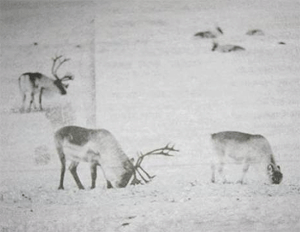
Figure 2: Picture of a local newspaper photograph of caribou. This picture was taken by a participant to demonstrate how important caribou is to her. This was the only way she could represent caribou because there was no hunter in her household or close family, and caribou are no longer seen walking around Iqaluit as in the past.
The importance of community food programs in Iqaluit for food access
Participants agreed on the necessity of having support mechanisms in the community to help those in need (Figs3,4). Many expressed the crucial role these play in their lives to secure access to food and expressed concern that one of them, Tukisigiarivik, might close due to lack of funding. Some participants also mentioned that without such organizations they would need to be constantly knocking on the doors of family or friends to ask for food.
Tukisigiarvik was perceived as particularly important to participants as a place where they felt welcome, could warm up, meet with friends and have access to country foods (Figs5,6). Because it was open during weekdays from 09.00 to 17.00 (except during lunch hour) participants knew there was somewhere to go, in the same way a community center would provide welcome and shelter in southern Canadian communities. Tukisigiarvik's clientele is mostly adults and elders.
Because Tukisigiarvik is closed for lunch, the Soup Kitchen (open from 12.00 to 13.00 on weekdays) often serves as the lunch gathering place for those in need. The Soup Kitchen clientele is mostly adults from all age groups, often coming alone and on a regular basis. On an average day approximately 10 school children ate lunch at the Soup Kitchen.
Finally, the Food Bank's clientele is mostly families but includes single men from Iqaluit's men's shelter. All three organizations provide different types of services on different schedules, which complement each other to enhance food security for some. Participants also noted the support programs can also foster strong dependence on the availability of these services and create a feeling of stress regarding their continued operation.
It's good for a few days. We would like to get some fresh foods also sometimes
It's essential to have it here in Iqaluit, it would be better if we had it every week.
If we didn't have this, we wouldn't have anything to eat.

Figure 3: Foods received at the food bank for two people for 2 weeks.
We always come here because we feel accepted, good and safe here...and we can eat country foods.
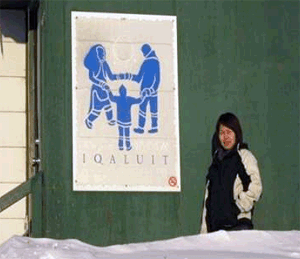
Figure 4: Tukisigiarvik drop-in center in Iqaluit.
Those of us who don't have skidoos, we come here to get our country foods. This is where we get the most.
Country food is here everyday.
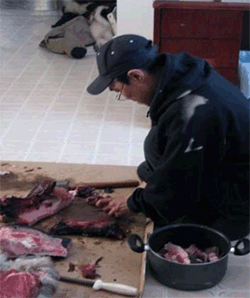
Figure 5: Sharing walrus and caribou at Tukisigiarvik.
I feel better when I eat country food. I like coming here because I can eat country food... .I don't like eating only store food.
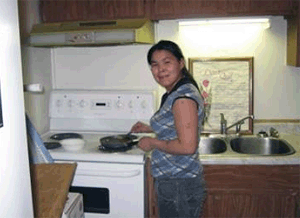
Figure 6: Preparing fried caribou at Tukisigiarvik.
The cost of food in the North and the frustration caused by the limit it imposes on the choice of foods
Participants discussed the high price of food in Iqaluit and how that influenced their ability to make healthy choices (Figs7,8). The combination of the high prices of foods found in supermarkets, limited access to income, and unemployment contributed to the challenge of accessing store-bought foods. Some participants discussed the fact that they often purchase more expensive convenience and processed foods. They acknowledged that they could make some of the purchased processed foods at home for less cost and in larger quantities, but because they were not feeding a family they were likely to purchase foods one meal at a time. Participants said they would pay for country food because of their desire for it and because some were unable to access customary food-sharing networks (ie not having a hunter in the family or extended family). However, the high price and inconsistent availability of commercially sold country food made it difficult to purchase, which meant that many of the participants had to rely on store-bought meats (Fig9).
It's worse in other communities... But it's already too expensive compared to the south.
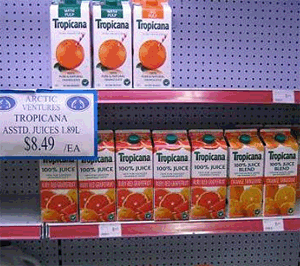
Figure 7: The cost is $8.49 for 1.89 L of Tropicana Orange juice.
The high cost of living here is crazy....
This is what kids have for breakfast. That's one of the things we always have to get for our children. Doesn't matter how expensive it is, we have to get it.

Figure 8: The cost is $14.19 for 750 g of Corn Flakes.
So expensive...They used to be about $18, now they are even more expensive.
If I could afford it I would [purchase] country foods at the store instead of these.
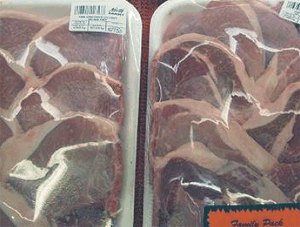
Figure 9: The cost is $27.53 for 1.5 kg of pork chops.
Addictions and the difficulty budgeting to make food a priority
Some participants spoke of the difficulties many people in the community have with substance abuse. They also talked about the internal struggles they experience to cope with a number of challenging issues in their lives. They discussed how significant amounts of income can be spent on alcohol, cigarettes and drugs instead of food (Figs10,11). Participants reflected on the fact that alcohol and addictions were a problem during their childhood, and that they felt the cycle continues for some community members in the present. This was an important topic of discussion for some participants; however, as one member of the group was uncomfortable with the path of the discussion, the topic was changed before further exploration.
Sometimes it comes first, before food...
It was happening when I was growing up and it still happens now.
People just buy bottles instead of buying food.

Figure 10: Participants calculated that the price of products in this picture is approximately $140.
It's like the alcohol picture... Sad but true.
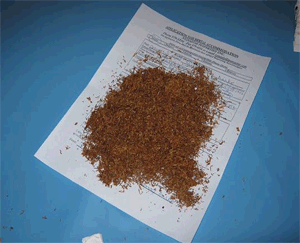
Figure 11: Tobacco leaves spread over a sheet to sign up for public housing in Iqaluit.
Discussion
The photographs and narratives woven by participants indicate that users of community food programs have a strong desire to consume country foods, which was, for many, only possible when going to Tukisigiarvik. Participants expressed the feeling of wellbeing and safety they experienced at Tukisigiarvik and spoke of the importance of this centre in allowing them to access country foods. Weakening of food sharing mostly due to the rising cost of hunting14 has been noted in other Inuit communities, but also in the context of changing social relations, where non-hunters and the young generations are less likely to share foods and resources within the family at the community level60. The sharing of food is an important component of Inuit culture, and participants who, for personal reasons, had limited or no access to sharing networks within their family or community, could continue to access traditional foods by visiting Tukisigiarvik.
Participants highlighted that having access to sharing networks was important to maintaining food access, and that those who had hunters in their sharing network had better access to country foods. However, within the group of participants, only one had a full time hunter in the family who could provide country foods on a regular basis to relatives. The other participants had to rely on Tukisigiarvik to access country foods because they were not part of a sharing network for country foods.
The other two organizations were also crucial for underpinning food access for the participants, with the Food Bank providing store-bought foods twice a month and the Soup Kitchen providing a daily meal. Although these organizations do not provide country foods, participants expressed the necessity of having such programs in the community to help families access store-bought foods. While other work has suggested that such services do little to prevent food insecurity at the household level44, the study participants said that without this type of support they would have to go from house to house asking for food from family members and friends, indicating that such services can help limit severe food insecurity. Participants expressed no preference among the different services but emphasized the need to keep all available in Iqaluit.
The research also suggests that the high price of store food in the Arctic made it difficult for some of the participants to afford what they really wanted to eat in the quantity they wanted. A high cost of food has been reported in many other studies in the Arctic6,61 and one large cross-sectional Arctic study among Inuit women aged 20-40 years found that 58.3% of the women reported not being able to afford all the foods they needed at the store11. Store food is generally cheaper and more accessible in Iqaluit than in smaller communities where the average income is higher. However the present findings highlight that costs remain a challenge, particularly among the hidden poor. Furthermore, the country foods sold at the store were more expensive than store foods, further limiting the ability of participants to eat what they really wanted, as has also recently been documented among Greenlandic Inuit62. Indeed, in this study, some participants indicated that with higher financial means they would purchase country foods, rather than store foods, at the grocery store.
The research also found that beyond the participants' daily challenges with primary access to foods, addictions and substance abuse were the underlying determinants of food security, and this was identified by participants as a long-term problem for many in the community. This underscores the need for interventions that focus not only on the primary prevention of food insecurity in the north, but also on the overall wellness of the individual in the context of improving community health in northern populations.
In this study Photovoice was a useful participatory research method to gather information about the food system of chronic users of community food programs. The themes and pictures were clear, concise and decided on by the group of participants. Participants agreed to having the pictures exhibited at the local Nunatta Sunakkutaangit Museum during the summer 2010. By agreeing to the dissemination of the results and visually representing their reality, participants were actively involved in identifying some of the issues relating to food insecurity that affects some residents of Iqaluit.
Some of the challenges of using the Photovoice approach included the recruitment of individuals who were not regular users of the community programs, and who are hard to contact, due to temporary housing difficulties and not having a telephone number. This makes it difficult to plan a group workshop. In addition, some are offered work inconsistently and so cannot commit to regular workshop participation.
Finally, it is very important to think carefully about the content and phrasing of the question participants are asked to answer through photography. The question must be clear, understandable by all, and must, in the authors' opinion, touch on something people want to 'speak to'. If this is not the case, the message behind the pictures will not be as strong as it could have been. However, when the Photovoice topic does touch on personal issues, workshop facilitators must be aware that some participants may wish to avoid in-depth discussion of certain topics (in this case, substance abuse), or that other participants may feel uncomfortable discussing an issue, and this can 'shut down' group discussion. In such a case, individual follow-up interviews or group discussions of sensitive topics can be arranged with interested participants to obtain a better understanding.
In this article Photovoice research methodology was used to identify the food access issues of those using food-support mechanisms in Iqaluit, Nunavut, and to document with the words and eyes of the participants the challenges they faced in meeting their food needs. The focus was on proximate and distal causes and experiences of food insecurity, acknowledging that the marginalization and challenges of participants must be understood in the context of broader socioeconomic and cultural changes affecting northern Indigenous populations in Canada. This includes the legacy of residential schools, settlement relocation, relationships with the colonial state, and the rapid economic transformations and population influx affecting large settlements such as Iqaluit. The work described here provides a starting point for examining these social determinants of health in greater detail as the project evolves.
The continuing use of this research method, both in the north and in other parts of the world, in order to understand the experiences of individuals and societies facing health challenges will contribute to the growing body of health and wellness research. This research paves the way for the next research steps which include surveys and in-depth interviews with long-term users of these community-food programs in Iqaluit. The information gathered from these interviews will help understand program effects on the food security status of community members, and also will provide in-depth understanding of the factors identified in the Photovoice workshops. Finally, the results from this research will be used in future comparative analysis with Arctic case-studies that are using the same methodology.
Acknowledgements
The authors express their gratitude to the participants of the Photovoice Project, who gave their consent to the dissemination of these images: Eva Geetah, Anu Micheal, Adamie Pitseulak, Malaya Eeseemailee, Olooriat Mike, Johnny Mangitak, Appa Kelly, Lucy Angnakok. The authors are grateful for the support of the hard-working community members at the Tukisigiarvik Friendship Centre, the Iqaluit Food Bank and the Iqaluit Soup Kitchen who made this research possible.
References
1. Food and Agriculture Organization. The State of Food Insecurity in the World 2001. Rome: FAO, 2002.
2. Egeland GM, Faraj N, Osborne G. Cultural, socio-economic, and health indicators among Inuit preschoolers: Nunavut Inuit Health Survey, 2007-2008. Rural and Remote Health 1: 1365. (Online) 2010. Available: www.rrh.org.au (Accessed 25 November 2010).
3. Sharma S. Assessing diet and lifestyle in the Canadian Arctic Inuit and Inuvialuit to inform a nutrition and physical activity intervention programme. Journal of Human Nutrition and Dietetics 2010; 23(Suppl1): 5-17.
4. Myers H, Powell S, Duhaime G. Setting the table for food security: policy impacts in Nunavut. Canadian Journal of Native Studies 2004; 2: 425-445.
5. Ledrou I, Gervais J. Food insecurity. Health Reports cat no 82-003-XIE. Ottawa: Statistics Canada, 2005; 11-22.
6. Ford JD, Berrang-Ford L. Food security in Igloolik, Nunavut: an exploratory study. Polar Record 2009; 45(234): 225-236.
7. Egeland GM, Johnson-Down L. Food security & dietary adequacy: Canadian Inuit preschool children. Annals of Nutrition and Metabolism 2009; 55(Suppl1): 174.
8. Chabot M. Economic changes, household strategies, and social relations in contemporary Nunavik Inuit. Polar Record 2003; 39: 19-34.
9. Chan H. Food safety and food security in the Canadian Arctic. Meridian 2006; Fall/Winter: 1-4.
10. Chan H, Fediuk K, Hamilton S, Rostas L, Caughey A, Kuhnlein H et al. Food security in Nunavut, Canada: barriers and recommendations. International Journal of Circumpolar Health 2006; 65(5): 416-431.
11. Lambden J, Receveur O, Marshall J, Kuhnlein HV. Traditional and market food access in Arctic Canada is affected by economic factors. International Journal of Circumpolar Health 2006; 65(4): 331-340.
12. Kuhnlein HV, Receveur O. Local cultural animal food contributes high levels of nutrients for Arctic Canadian indigenous adults and children. Journal of Nutrition 2007; 137(4): 1110-1104.
13. Power E. Conceptualizing food security for Aborginal people in Canada. Canadian Journal of Public Health 2008; 99(2): 95-97.
14. Beaumier MC, Ford JD. Food Insecurity among Inuit women exacerbated by socio-economic stresses and climate change. Canadian Journal of Public Health 2010; 101(3): 196-201.
15. Ford JD, Beaumier MC. Feeding the family during times of stress: experience and determinants of food insecurity in an Inuit community. Geographical Journal 2011; 177(1): 44-61.
16. Pearce T, Smit B, Duerden F, Ford JD, Goose A, Kataoyak F. Inuit vulnerability and adaptive capacity to climate change in Ulukhaktok, Northwest Territories, Canada. Polar Record 2010; 46(237): 157-177.
17. Pratley E. Changing livelihoods/changing diets: the implications of changes in diet for food security in Arctic Bay, Nunavut (MA Thesis). Guelph, Canada: Guelph University; 2005.
18. Wesche S, Chan H. Adapting to the impacts of climate change on food security among Inuit in the Western Canadian Arctic. EcoHealth 2010; 1-13.
19. Lambden J, Receveur O, Kuhnlein HV. Traditional food attributes must be included in studies of food security in the Canadian Arctic. International Journal of Circumpolar Health 2007; 66(4): 308-319.
20. Gombay N. Sharing or commoditising? A discussion of some of the socio-economic implications of Nunavik's Hunter Support Program. Polar Record 2009; 45(233): 119-132.
21. Collings P, Wenzel G, Condon RG. Modern food sharing networks and community integration in the Central Canadian Arctic. Arctic 1998; 51(4): 301-314.
22. Wenzel GW. Canadian Inuit subsistence and ecological instability - if the climate changes, must the Inuit? Polar Research 2009; 28(1): 89-99.
23. Willows ND. Determinants of healthy eating in Aboriginal Peoples in Canada. Canadian Journal of Public Health 2005; 96(Suppl3): S32-S36.
24. Wenzel GW. Ningiqtuq - resource sharing and generalized reciprocity in Clyde-River, Nunavut. Arctic Anthropology 1995; 32(2): 43-60.
25. Wenzel GW. Animal Rights, Human Rights. Toronto: University of Toronto Press, 1991; 206.
26. Chabot, M. Consumption and standards of living of the Quebec Inuit: cultural permanence and discontinuities. Canadian Review of Sociology and Anthropology-Revue Canadienne De Sociologie Et D'Anthropologie 2004; 41(2): 147-170.
27. Kishigami N. A new typology of food-sharing practices among hunter-gatherers, with a special focus on Inuit examples. Journal of Anthropological Research 2004; 60(3): 341-358.
28. Duhaime G, Chabot M, Gaudreault M. Food consumption patterns and socioeconomic factors among the Inuit of Nunavik. Ecology of Food and Nutrition 2002; 41(2): 91-118.
29. Richmond CAM. The social determinants of Inuit health: a focus on social support in the Canadian Arctic. International Journal of Circumpolar Health 2009; 68(5): 471-487.
30. Ford JD, Pearce T. What we know, do not know, and need to know about climate change vulnerability in the western Canadian Arctic: a systematic literature review. Environmental Research Letters 2010; 5(1): 014008. DOI: 10.1088/1748-9326/5/1/014008
31. Nancarrow TL, Chan HM. Observations of environmental changes and potential dietary impacts in two communities in Nunavut, Canada. Remote and Rural Health 10(1):1370. (Online) 2010. Available: www.rrh.org.au (Accessed 20 June 2011).
32. Morin A, Edouard R, Duhaime G. Beyond the harsh. Objective and subjective living conditions in Nunavut. Polar Record 2010; 46(237): 97-112.
33. Hamelin AM, Mercier C, Bedard A. Needs for food security from the standpoint of Canadian households participating and not participating in community food programmes. International Journal of Consumer Studies 2011; 35(1): 58-68.
34. Willows ND, Au V. Nutritional quality and price of university food bank hampers. Canadian Journal of Dietetic Practice and Research 2006; 67(2): 104-107.
35. Kirkpatrick SI, Tarasuk V. Food insecurity and participation in community food programs among low-income Toronto families. Canadian Journal of Public Health 2009; 100(2): 135-139.
36. Irwin JD, Ng VK, Rush TJ, Nguyen C, He MZ. Can food banks sustain nutrient requirements? A case study in Southwestern Ontario. Canadian Journal of Public Health 2007; 98(1): 17-20.
37. Riches G. Food banks and food security: welfare reform, human rights and social policy. Lessons from Canada? Social Policy & Administration 2002; 36(6): 648-663.
38. Starkey LJ, Kuhnlein HV, Gray-Donald K. Food bank users: sociodemographic and nutritional characteristics. Canadian Medical Association Journal 1998; 158(9): 1143-1149.
39. Tarasuk VS, Beaton GH. Household food insecurity and hunger among families using food banks. Canadian Journal of Public Health 1999; 90(2): 109-113.
40. International Polar Year. Inuit Health Survey for Adults 2007-2008. (Online) no date. Available: http://www.inuithealthsurvey.ca/ (Accessed 20 October 2010).
41. Engler-Stringer R, Berenbaum S. Exploring food security with collective kitchens participants in three Canadian cities. Qualitative Health Research 2007 17(1): 75-84.
42. Rose D. Economic determinants and dietary consequences of food insecurity in the United States. Journal of Nutrition 1999 129(2): 517S-520S.
43. Power EM. Determinants of healthy eating among low-income Canadians. Canadian Journal of Public Health-Revue Canadienne De Sante Publique 2005. 96: S37-S42.
44. Tarasuk V, Reynolds R. A qualitative study of community kitchens as a response to income-related food insecurity. Canadian Journal of Dietetic Practice and Research 1999; 60(1): 11-16.
45. Canadian Association of Food Banks. Hunger Count. A Comprehensive Report on Hunger and Food Bank Use in Canada, and Recommendations for Change. Toronto: Canadian Association of Food Banks, 2009.
46. CBC News Canada. Iqaluit food banks fears cupboards in future. (Online) 2006. Available: http://www.cbc.ca/canada/north/story/2006/04/25/nor-iqaluit-food-bank.html (Accessed 8 June 2011).
47. Healey GK, Magner KM, Ritter R, Kamookak R, Aningmiuq A, Issaluk B et al. Community perspectives on the impact of climate change on health in Nunavut, Canada. Arctic 2011; 34(1): 89-97.
48. Moffit P, Robinson Vollman A. Photovoice: picturing the health of Aboriginal women in a remote northern community. Canadian Journal of Nursing Research; 36(4): 189-201.
49. Searles E. Placing identity: town, land and authenticity in Nunavut, Canada. Acta Boreala 2010; 27(2): 151-166.
50. Rasmussen RO. Gender and generation: perspectives on ongoing social and environmental changes in the Arctic. Journal of Women in Culture and Society 2009; 34(3): 524-532.
51. Tester F. Iglutaasaavut (our new homes): Neither "new" nor "ours" housing challenges of the Nunavut Territorial Government. Journal of Canadian Studies 2009; 43(2): 137-158.
52. National Aboriginal Health Organization. Homelessness and housing realities for Inuit. Ottawa: NAHO, 2008.
53. Nunavut Status of Women Council. The little voices of Nunavut: a study of women's homelessness north of 60. Report. Iqaluit: Qulliit Nunavut Status of Women Council, 2007.
54. Green E, Kloos B. Facilitating Youth participation in a context of forced migration: a Photovoice project in Northern Uganda. Journal of Refugee Studies 2009; 22(4): 460-482.
55. Hergenrather KC, Rhodes SD, Cowan CA, Bardhoshi G, Pula S. Photovoice as community-based participatory research: a qualitative review. American Journal of Health Behavior 2009; 33(6): 686-698.
56. Wang C, Burris MA. Photovoice: concept, methodology, and use for participatory needs assessment. Health Education & Behavior 1997; 24(3): 369-387.
57. Healey GK. Health research ethics workshop and community consultation in Iqaluit, Nunavut . Nunavut: Qaujigiartiit/Arctic Health Research Network, 2006.
58. Healey GK. Health research ethics workshop and community consultation in Rankin Inlet, Nunavut. Nunavut: Qaujigiartiit/Arctic Health Research Network, 2007.
59. Pearce TD, Ford JD, Laidler GJ, Smit B, Duerden F, Allarut M et al. Community collaboration and climate change research in the Canadian Arctic. Polar Research 2009; 28(1): 10-27.
60. Ford JD, Smit B, Wandel J, MacDonald J. Vulnerability to climate change in Igloolik, Nunavut: what we can learn from the past and present. Polar Record 2006; 42(221): 127-138.
61. Mead E, Gittelsohn J, Kratzmann M, Roache C, Sharma S. Impact of the changing food environment on dietary practices of an Inuit population in Arctic Canada. Journal of Human Nutrition and Dietetics 2010; 23(Suppl1): 18-26.
62. Goldhar C, Ford JD, Berrang-Ford L. Prevalence of food insecurity in a Greenlandic community and the importance of social, economic and environmental stressors. International Journal of Circumpolar Health 2010; 69(3): 285-303.


